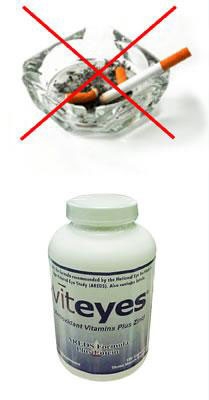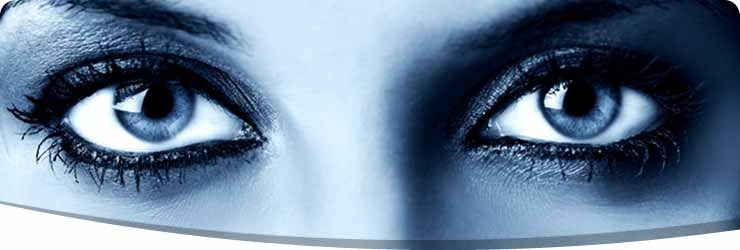Recent studies indicate that it may be possible to reduce the risk of dry AMD
from progressing to a more severe stage by modifying lifestyle and diet.
Smoking
There is much evidence that tobacco smoking increases the risk of severe vision loss from AMD and from many other conditions. Stopping smoking is therefore one of the cornerstones of lifestyle modification that could be of great benefit to you both for AMD and for your general health. In addition those patients who are non smokers for at least five years are also able to safely take the high dose vitamins discussed later. There is a great deal of help now available through your GP to help you quit smoking.
Vitamin supplements
The ARED study showed conclusively that AMD could be "slowed down" by using high dose vitamins containing Beta Carotene (a type of vitamin A), Vitamins C & E, Zinc & Copper. These were used at very high doses and were successful in slowing down AMD progression by around 25% after five years of use. This mixture of Vitamins A,C,E & Zinc/copper is now known as the AREDS formula. This type of formulation is recommend when there is already significant dry AMD present and only in non smokers. For smokers an alternative formulation (without the Vitamin A as this may increase the risk of lung cancer in smokers) can be considered. Recent updates on the ARED study have also indicated the likely positive effect of Lutein and Omega 3. There are now formulations available over the counter that contain Lutein in addition to the standard AREDS formula. At present most GP's are not obliged to prescribe these supplements on the NHS and most patients are having to buy these supplements either from their chemist, optician or via the internet.
Dietary Changes
Certain foods are high in either antioxidants or Lutein. Those patients who would prefer not to take vitamin pills may wish to alter their diet so that the foods indicated in the table below are included more regularly in their diet.
Screening/Observation
Ocular imaging can perform a number of tests to learn more about the structure and health of your eye and an eye care professional can check your retina for early signs of disease, including:
▪ Leaking blood vessels.
▪ Retinal swelling (macular edema).
▪ Pale, fatty deposits on the retina--signs of leaking blood vessels.
▪ Damaged nerve tissue.
▪ Any changes to the blood vessels.
The most common symptom of dry AMD is slightly blurred vision. You may have difficulty recognizing faces. You may need more light for reading and other tasks. Dry AMD generally affects both eyes, but vision can be lost in one eye while the other eye seems unaffected.
One of the most common early signs of dry AMD is drusen. Drusen are yellow deposits under the retina. They often are found in people over age 60. Your eye care professional can detect drusen during a comprehensive dilated eye exam. These can be observed and charted with more accuracy using OCT.
If you have vision loss from dry AMD in one eye only, you may not notice any changes in your overall vision. With the other eye seeing clearly, you still can drive, read, and see fine details. You may notice changes in your vision only if AMD affects both eyes. If blurriness occurs in your vision, see an eye care professional for a comprehensive dilated eye exam.
Drusen alone do not usually cause vision loss. In fact, scientists are unclear about the connection between drusen and AMD . They do know that an increase in the size or number of drusen raises a person's risk of developing either advanced dry AMD or wet AMD . These changes can cause serious vision loss.

